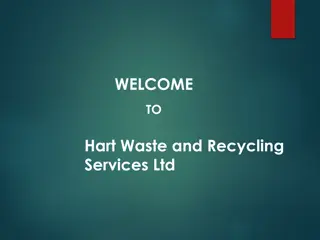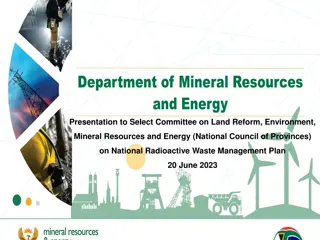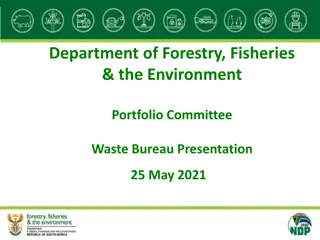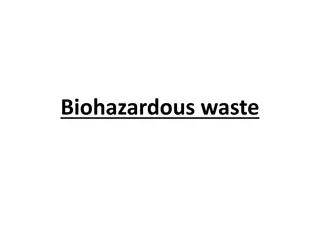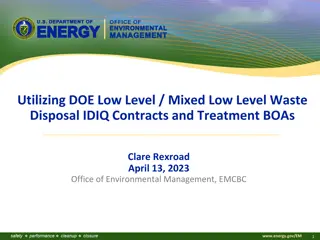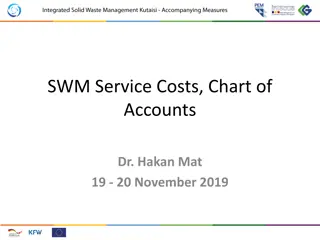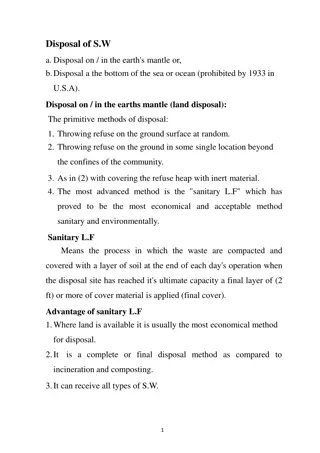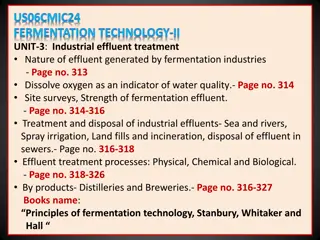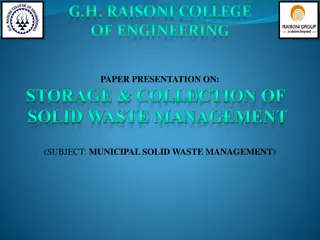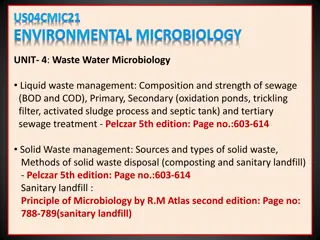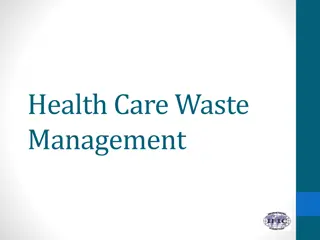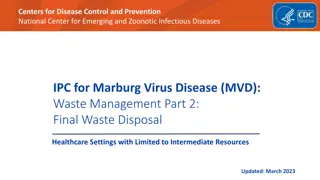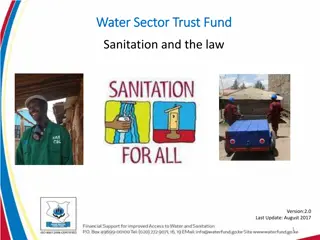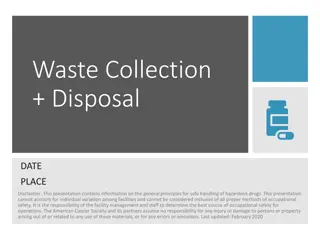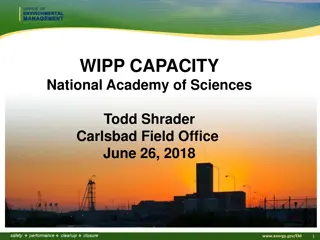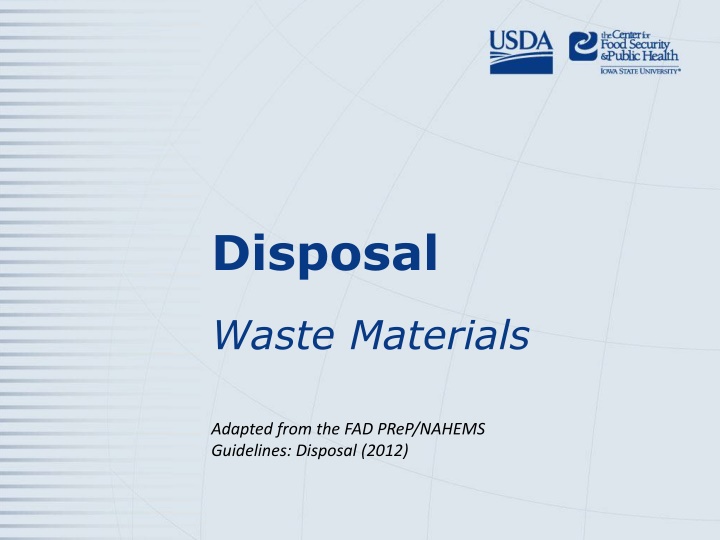
Guidelines for Waste Disposal and Classification
Proper waste disposal is crucial for maintaining environmental health. Understanding waste classification is key to safe transportation and disposal, ensuring compliance with legal regulations. Hazardous waste, medical waste, and solid waste have specific guidelines, requiring special handling and treatment. Utilizing professionals for waste classification is recommended to navigate the complexities of waste management effectively.
Download Presentation

Please find below an Image/Link to download the presentation.
The content on the website is provided AS IS for your information and personal use only. It may not be sold, licensed, or shared on other websites without obtaining consent from the author. If you encounter any issues during the download, it is possible that the publisher has removed the file from their server.
You are allowed to download the files provided on this website for personal or commercial use, subject to the condition that they are used lawfully. All files are the property of their respective owners.
The content on the website is provided AS IS for your information and personal use only. It may not be sold, licensed, or shared on other websites without obtaining consent from the author.
E N D
Presentation Transcript
Disposal Waste Materials Adapted from the FAD PReP/NAHEMS Guidelines: Disposal (2012)
Classification of Waste Materials FAD PReP/NAHEMS Guidelines: Disposal - Waste Materials USDA APHIS and CFSPH
Waste Examples Animal by-products Milk, wool, etc. Bedding, manure, hatchery waste Feed Hay, grain, silage Equipment, supplies, and materials Debris Buildings and structures FAD PReP/NAHEMS Guidelines: Disposal - Waste Materials USDA APHIS and CFSPH
Classification Overview Waste classification, transportation, and disposal Must comply with applicable laws Federal, state, local jurisdictions May vary state-to-state Be especially aware if waste generated could be transported across state lines FAD PReP/NAHEMS Guidelines: Disposal - Waste Materials USDA APHIS and CFSPH
Classification Overview All non-nuclear waste designated as solid Hazardous (solid) waste Medical and infectious (solid) waste Utilize professionals to help classify waste FAD PReP/NAHEMS Guidelines: Disposal - Waste Materials USDA APHIS and CFSPH
Solid Waste Subtitle D landfills Accept most types of solid waste Non-hazardous waste Some medical waste Usually privately owned and operated Under no obligation to accept wastes Carcass disposal could be restricted Pre-event agreements important FAD PReP/NAHEMS Guidelines: Disposal - Waste Materials USDA APHIS and CFSPH
Hazardous (Solid) Waste EPA definition Waste that is dangerous or potentially harmful to our health or environment Includes liquids, solids, gases, sludges Disinfectants used in an animal health emergency may be considered hazardous waste Requires special shipping to a permanent treatment-storage facility FAD PReP/NAHEMS Guidelines: Disposal - Waste Materials USDA APHIS and CFSPH
Medical (Solid) Waste Any solid waste generated in the diagnosis, treatment or immunization of human beings or animals Regulated by: DOT OSHA FDA EPA does not directly regulate medical waste FAD PReP/NAHEMS Guidelines: Disposal - Waste Materials USDA APHIS and CFSPH
Infectious (Solid) Waste Regulated medical waste (RMW) Also known as biohazardous waste or infectious medial waste May be contaminated by blood, body fluids, or other potentially infectious materials Must usually be rendered noninfectious before disposal Typically governed by State law FAD PReP/NAHEMS Guidelines: Disposal - Waste Materials USDA APHIS and CFSPH
Selecting Disposal Methods for Waste FAD PReP/NAHEMS Guidelines: Disposal - Waste Materials USDA APHIS and CFSPH
Waste Disposal Examples Additional waste materials can include: Liquid wastes (milk, wastewater, etc.) Manure, litter, slurry Livestock feeds Disposal methods vary according to pathogen May include burning, burial, composting, or landfilling FAD PReP/NAHEMS Guidelines: Disposal - Waste Materials USDA APHIS and CFSPH
Pathogen Type/Strain Important to understand pathogen type/strain in order to: Prevent further pathogen spread Safeguard human, animal, and environmental health Also affects transportation planning, as well as cleaning and disinfection protocols FAD PReP/NAHEMS Guidelines: Disposal - Waste Materials USDA APHIS and CFSPH
For More Information FAD PReP/NAHEMS Guidelines & SOP: Disposal (2012) http://www.aphis.usda.gov/animal_ health/emergency_management/ Disposal web-based training module http://naherc.sws.iastate.edu/ FAD PReP/NAHEMS Guidelines: Disposal - Waste Materials USDA APHIS and CFSPH
Guidelines Content Authors Rene Dewell, DVM, MS (CFSPH) Tom Glanville, PhD (Iowa State University) Significant contributions to the content were provided by USDA APHIS VS: Lori P. Miller, PE Darrel K. Styles, DVM, PhD FAD PReP/NAHEMS Guidelines: Disposal - Waste Materials USDA APHIS and CFSPH
Acknowledgments Development of this presentation was by the Center for Food Security and Public Health at Iowa State University through funding from the USDA APHIS Veterinary Services PPT Author: Kerry Leedom Larson, DVM, MPH, PhD, DACVPM Reviewers: Janice Mogan, DVM; Rene Dewell, DVM, MS

